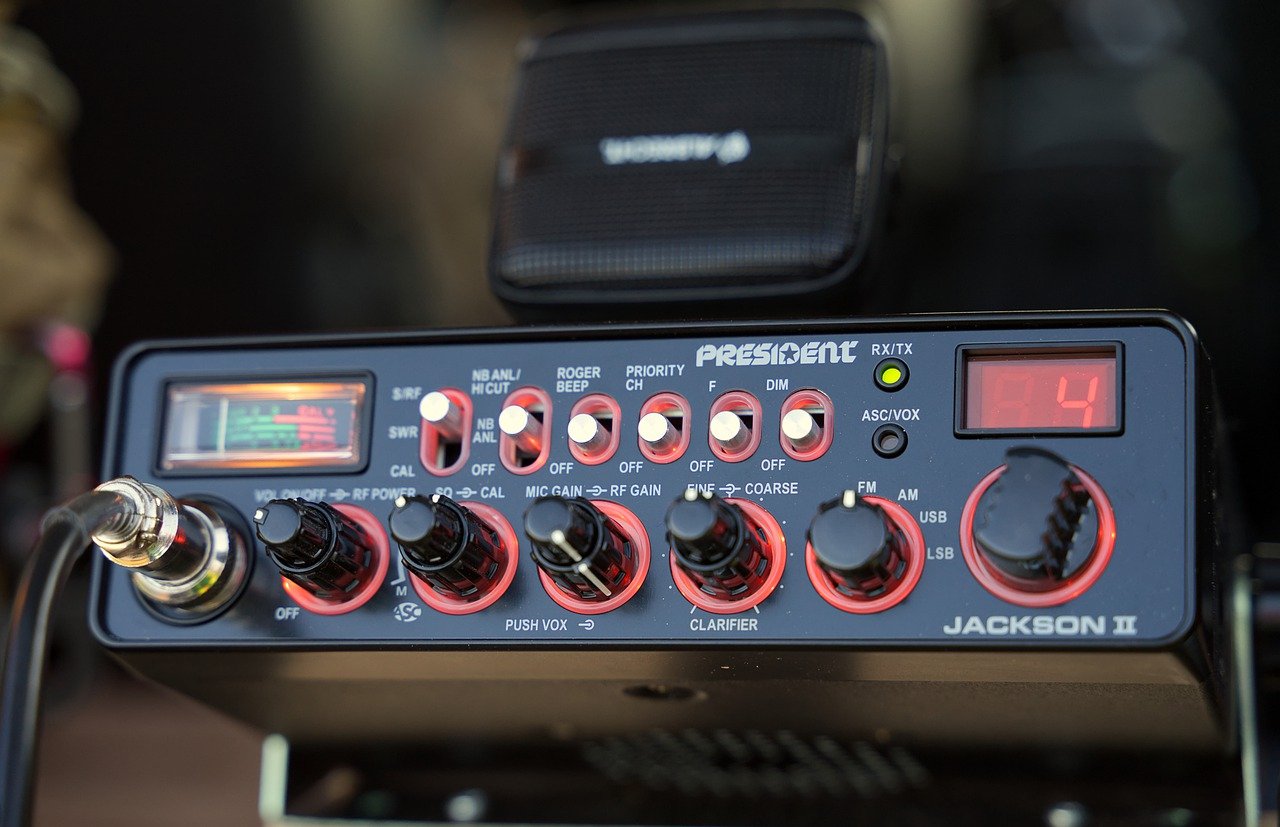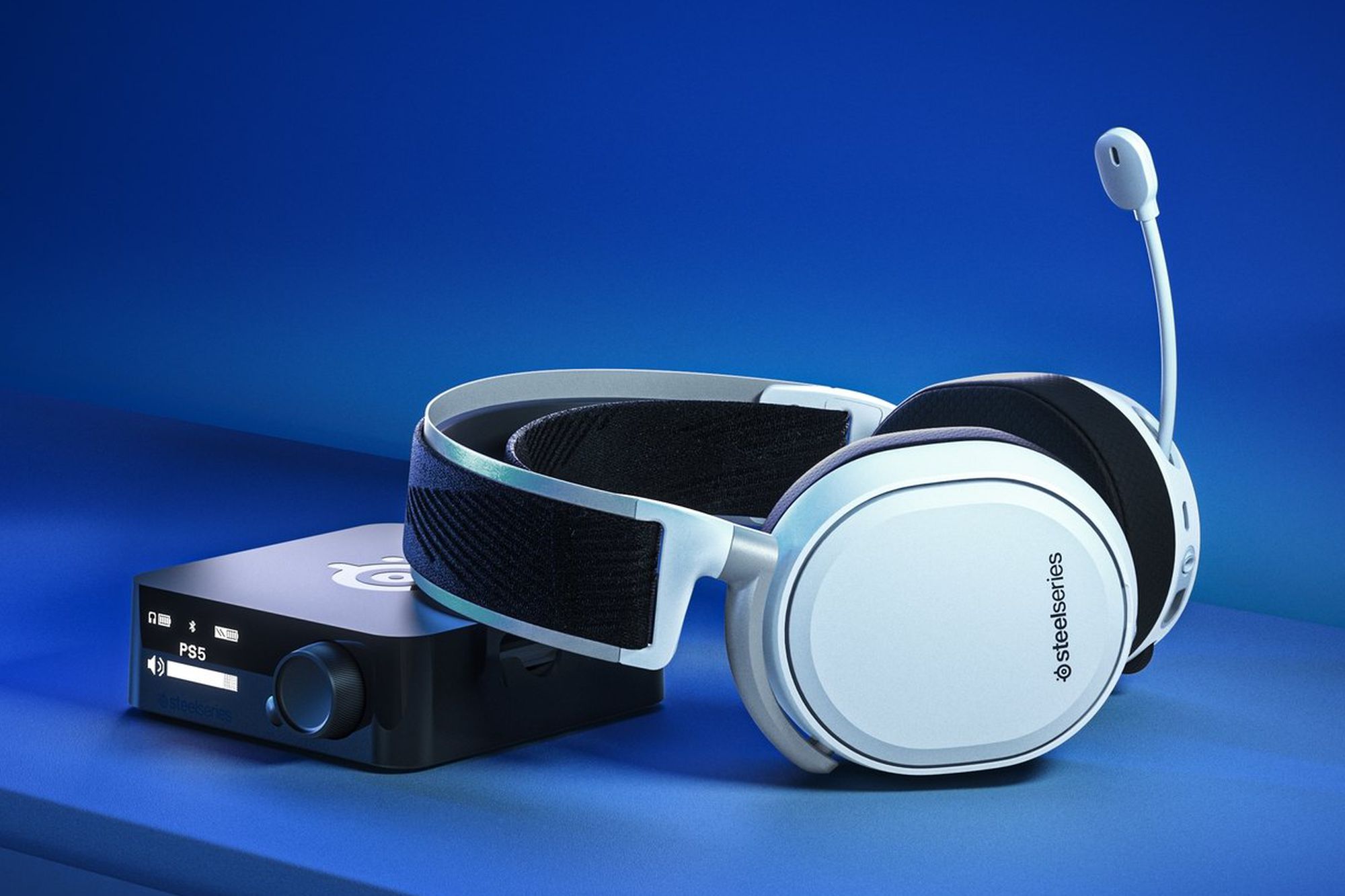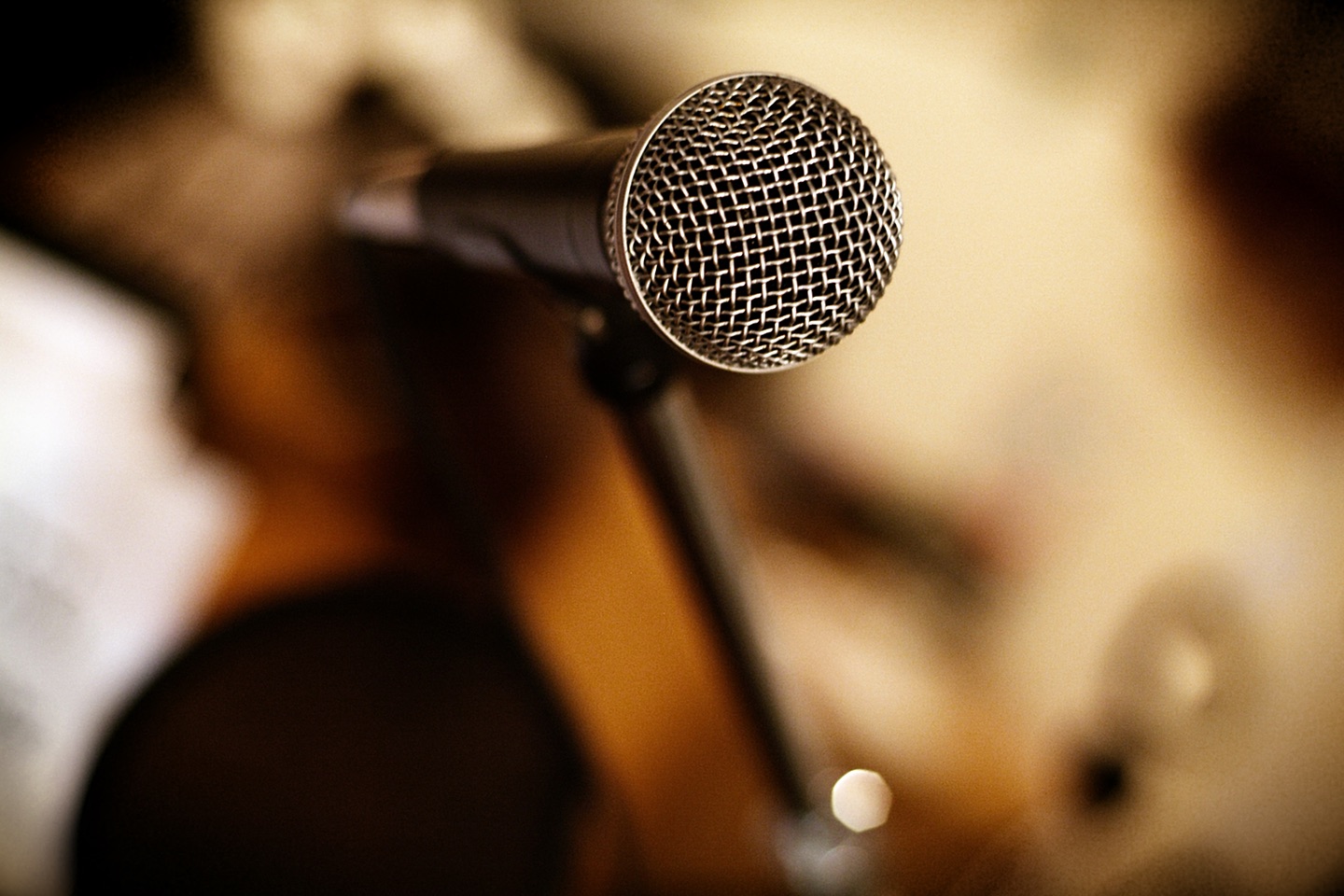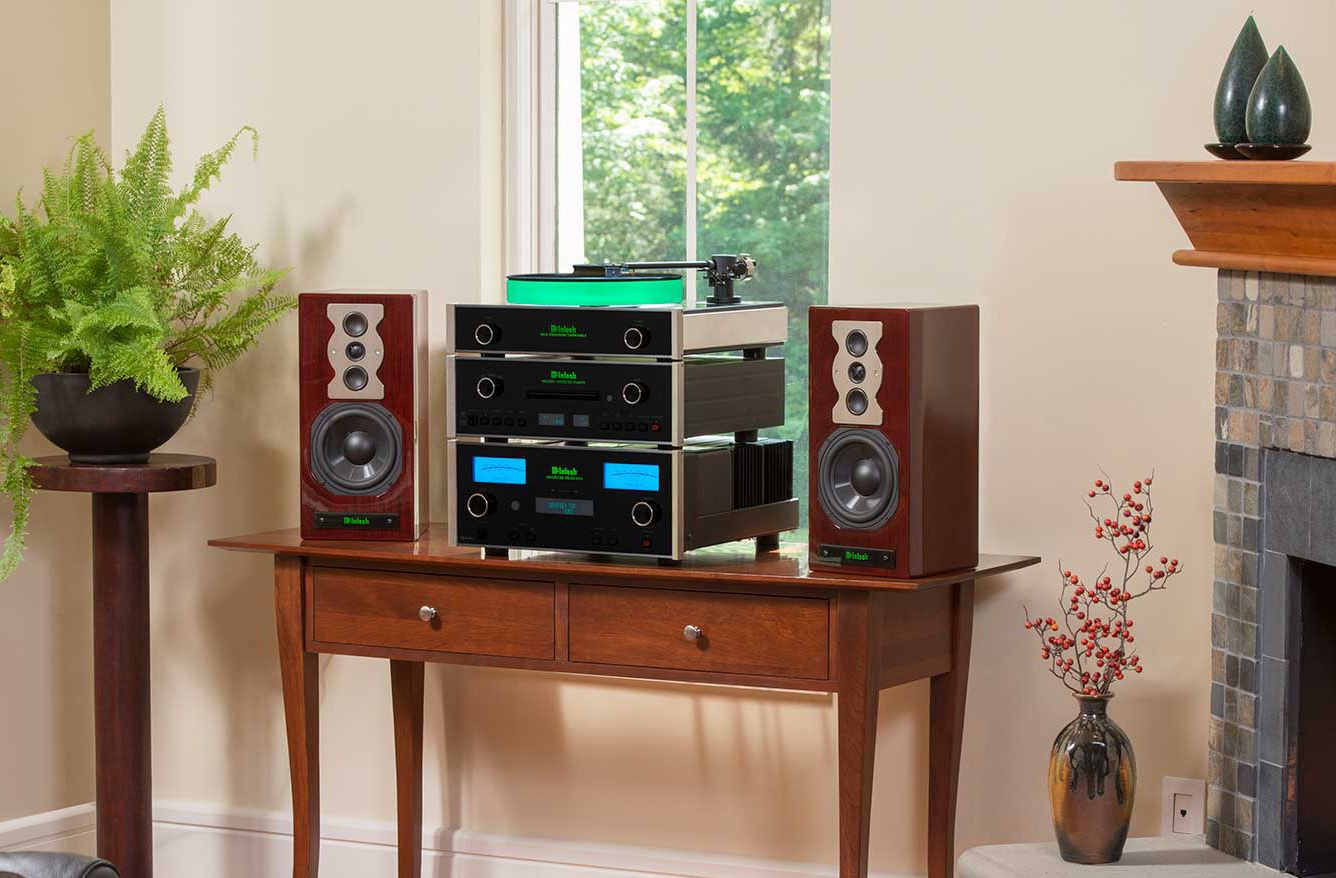Home>Instruments>Bass>How To Increase Bass In Speaker
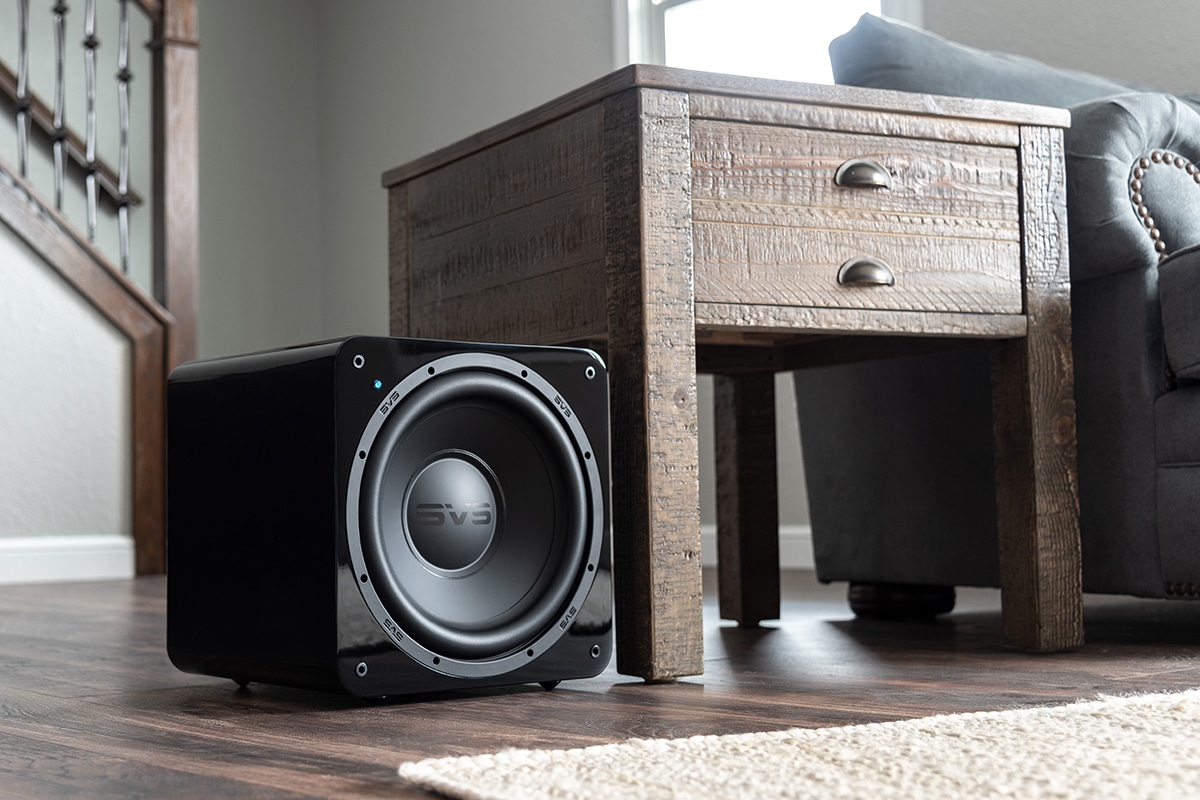

Bass
How To Increase Bass In Speaker
Modified: February 18, 2024
Learn how to increase bass in your speaker with these simple tips and techniques. Enhance your audio experience and enjoy deeper, richer sound.
(Many of the links in this article redirect to a specific reviewed product. Your purchase of these products through affiliate links helps to generate commission for AudioLover.com, at no extra cost. Learn more)
Table of Contents
- Introduction
- Understanding the Basics of Bass in Speakers
- Choosing the Right Speakers for Enhanced Bass Performance
- Optimizing Speaker Placement for Increased Bass
- Adjusting Equalization Settings for Boosted Bass
- Utilizing Bass-Enhancing Accessories
- Enhancing Bass Through Audio Subwoofer Integration
- Fine-Tuning Bass Using Soundproofing Techniques
- Conclusion
Introduction
Welcome to the world of bass, where low frequencies reign supreme and add a depth and richness to our audio experience. Whether you’re a music enthusiast, a gamer, or a home theater enthusiast, having a speaker system with enhanced bass can take your audio enjoyment to the next level.
In this article, we will explore various techniques and strategies to increase the bass in your speakers. We’ll delve into the fundamentals of bass, discuss the importance of speaker selection, explore optimal speaker placement, dive into equalization settings, and explore the use of accessories to enhance bass performance. Additionally, we’ll touch on the integration of subwoofers and soundproofing techniques to fine-tune the bass.
But why is bass so important? It’s not just about making your music or movies sound deeper and more impactful. Bass adds a layer of realism and immersion, allowing you to feel the music or explosions in your favorite action movie. It enhances the overall audio experience, making it more enjoyable and engaging.
Before we dive into the techniques and strategies, it’s important to understand the basics of bass and how it relates to speaker performance. By having a solid understanding of these concepts, you’ll be better equipped to make informed decisions and optimize your speaker system for enhanced bass.
Understanding the Basics of Bass in Speakers
When it comes to audio, bass refers to the low-frequency sounds that give depth and weight to the overall sound profile. In speakers, bass is produced by the movement of the diaphragm or cone, which creates air pressure waves that we perceive as low-frequency tones.
One essential component of understanding bass is knowing the frequency range it encompasses. Typically, bass ranges from 20Hz to 250Hz, but the lower end of the spectrum is particularly critical for that deep, rumbling sensation. Human hearing is most sensitive to frequencies around 2kHz to 5kHz, which is why bass can often be overpowering if not properly balanced.
Knowing the frequency range of bass is vital because it allows us to select speakers that can accurately reproduce those low frequencies. Speakers with larger woofers or dedicated subwoofers are usually better suited for producing deep bass, as they can move more air and handle lower frequencies more effectively.
It’s important to note that not all speakers are created equal in terms of bass reproduction. Some speakers naturally have more emphasis on bass, while others may have a flatter frequency response, resulting in a more neutral or balanced sound. Understanding the characteristics of different speakers is crucial when aiming to enhance bass performance.
Additionally, speaker construction and driver design also play a role in bass performance. Enclosure types, such as ported or sealed designs, can affect the bass response. Ported enclosures allow for more air movement and lower bass extension, while sealed enclosures provide tighter and more controlled bass.
Lastly, understanding the concept of resonance is important when dealing with bass in speakers. Every object has a natural frequency at which it resonates or vibrates most efficiently. Speaker cabinets and drivers also have resonant frequencies that can impact bass reproduction. Designing speakers to minimize resonance and employing techniques like internal bracing can lead to cleaner and more accurate bass reproduction.
By having a solid understanding of the fundamentals of bass in speakers, you’ll be better equipped to make informed choices when selecting speakers that can deliver the enhanced bass performance you desire. In the next section, we will explore how to choose the right speakers for your needs.
Choosing the Right Speakers for Enhanced Bass Performance
When it comes to achieving enhanced bass performance, selecting the right speakers is paramount. While almost any speaker can produce bass to some degree, certain types of speakers are designed specifically to excel in delivering deep and impactful bass.
One crucial factor to consider is the size of the speakers. Generally, larger speakers with bigger woofers have a greater ability to produce deep bass. This is because larger woofers can move more air, generating the necessary low-frequency vibrations for a rich and powerful bass response. Look for speakers with woofers that are at least 5 inches in diameter, although larger woofers are preferable for more pronounced bass.
In addition to size, the design of the speaker enclosure also plays a significant role in bass performance. Ported enclosures, also known as bass reflex enclosures, have a tuned port that allows the speaker to produce deeper bass by utilizing the resonant frequency of the enclosure. These types of speakers are generally more suitable for enhancing bass reproduction in larger spaces or when a more prominent bass response is desired.
On the other hand, sealed enclosures provide a tighter and more controlled bass response. They are ideal for smaller rooms or when a more accurate and balanced bass is desired. Sealed enclosure speakers are known for their quick and agile bass reproduction, although they may lack the sheer impact and extension of ported enclosures.
Another consideration is choosing speakers that feature a dedicated subwoofer. Subwoofers are specialized speakers designed specifically for reproducing low-frequency sounds. They excel at delivering deep, rumbling bass with exceptional clarity and impact. By using a dedicated subwoofer, you can offload the bass frequencies from your main speakers, allowing them to focus on delivering more precise mid-range and high-frequency sounds.
When selecting speakers for enhanced bass performance, it’s also important to consider the overall system compatibility. Ensure that the speakers you choose match the power output of your amplifier or receiver to avoid distortion or damage to the speakers. Additionally, consider the impedance and sensitivity ratings of the speakers to ensure they are compatible with your audio system.
By carefully considering the size, design, and compatibility of the speakers, you can choose the right ones to achieve enhanced bass performance. In the next section, we will explore optimal speaker placement techniques to maximize bass impact.
Optimizing Speaker Placement for Increased Bass
Once you have chosen the right speakers, the next step in achieving increased bass performance is optimizing their placement. Proper speaker placement can significantly impact bass reproduction and overall audio quality. Here are some tips to optimize speaker placement for increased bass:
- Positioning the speakers: Start by placing the speakers away from walls and corners. Placing them too close to boundaries can result in added bass reinforcement, which may lead to boomy or muddy bass. Experiment with different speaker placements to find the sweet spot where bass response is smooth and well-balanced.
- Room acoustics: Take into account the acoustic properties of your room. Hard surfaces like bare walls and floors tend to reflect sound, while soft materials like curtains and carpets absorb sound. To optimize bass performance, consider adding acoustic treatments such as bass traps or diffusers to minimize unwanted reflections and improve bass clarity.
- Symmetrical placement: Try to position the speakers symmetrically in the room. This can help ensure a balanced soundstage and uniform bass response throughout the listening area. If possible, maintain an equal distance between the speakers and the side walls for better stereo imaging and bass distribution.
- Toe-in angle: Experiment with the toe-in angle of the speakers. Slightly angling the speakers towards the listening area can improve the focus and imaging of the soundstage, including the bass response. Fine-tune the angle to find the optimal balance between direct sound and room reflections.
- Subwoofer placement: If you are using a dedicated subwoofer, its placement is crucial for optimal bass performance. Avoid placing the subwoofer in a corner, as this can result in excessive bass buildup. Instead, try placing it near a wall or along the same plane as your main speakers for a more balanced bass response.
Remember, every room is unique, and the best placement for your speakers may vary based on your specific room dimensions and furniture arrangement. Don’t be afraid to experiment and make small adjustments to achieve the desired bass impact and overall audio quality.
In the next section, we’ll explore how adjusting equalization settings can further enhance the bass performance of your speakers.
Adjusting Equalization Settings for Boosted Bass
Equalization, or EQ, is a powerful tool that allows you to adjust the frequency response of your speakers to achieve the desired sound quality. When it comes to bass enhancement, tweaking the equalization settings can make a significant difference in the overall bass performance of your speakers.
Most audio receivers, amplifiers, and even some powered speakers feature built-in equalization controls. These controls typically include bass, midrange, and treble adjustments. To boost the bass, you’ll want to focus on the bass control or the low-frequency adjustments.
Start by setting the bass control to a neutral or flat position. This provides a balanced starting point without any artificial boost or attenuation. From there, gradually increase the bass control or low-frequency adjustments to add more bass presence. Be careful not to overdo it, as excessive bass boost can lead to distortion and overpowering other frequencies.
Another option is to use a dedicated graphic equalizer or a digital signal processor (DSP) with customizable EQ presets. These allow for more precise adjustments across specific frequency ranges. Look for EQ presets or custom settings that emphasize the bass frequencies to enhance the low-end response of your speakers.
When adjusting the equalization settings, it’s important to consider the overall audio balance. Boosting the bass should be done in moderation to maintain a natural sound representation. Keep in mind that every audio system and room environment is different, so it may take some trial and error to find the perfect EQ settings that deliver the desired bass performance without compromising other frequencies.
If you’re unsure about how to optimize the EQ settings, consider using external audio calibration tools or seeking the assistance of a professional audio technician. These tools can help analyze your room acoustics and make precise EQ adjustments to achieve the best possible bass performance.
Remember that adjusting the equalization settings for boosted bass is just one piece of the puzzle. It should be used in conjunction with proper speaker selection, placement, and room acoustics to ensure a well-balanced and optimized audio experience.
In the next section, we’ll explore how to utilize bass-enhancing accessories to further enhance the bass performance of your speakers.
Utilizing Bass-Enhancing Accessories
When it comes to enhancing the bass performance of your speakers, there are various accessories available that can further optimize and augment the low-frequency response. These accessories can help fine-tune the bass reproduction and improve the overall audio experience. Here are a few popular bass-enhancing accessories to consider:
- Subwoofer Cables: Using high-quality subwoofer cables can make a noticeable difference in bass clarity and impact. These cables are designed specifically for low-frequency signals and often have shielding to reduce interference and signal loss. Look for cables with thick gauge conductors and gold-plated connectors for maximum signal transfer.
- Bass Shakers: Bass shakers are tactile transducers that are designed to create vibrations or tactile sensations for an immersive experience. These devices can be placed under furniture or seating to provide a physical and tangible bass sensation, enhancing the overall impact of your audio. Bass shakers can be connected to your audio amplifier or receiver using a dedicated bass shaker amplifier.
- Room Correction Systems: Room correction systems, such as digital signal processors (DSPs) or acoustic treatments, are designed to optimize the sound quality in your room by compensating for room resonances and acoustic imperfections. These systems can help improve the bass response by reducing unwanted room resonances and balancing the overall frequency response. Some DSPs also come with built-in equalization capabilities, allowing for precise adjustments to enhance the bass performance.
- Bass Traps: Bass traps are acoustic panels or devices specifically designed to absorb low-frequency sound waves. Placing bass traps in the corners of your room can help minimize bass build-up and reduce unwanted resonances. This can result in a cleaner, tighter, and more accurate bass response.
- Isolation Pads: Isolation pads or decoupling feet can help reduce vibrations and resonance between your speakers and the surface they are placed on. By isolating the speakers from the surface, these accessories can minimize unwanted vibrations and improve bass clarity and definition. Isolation pads are particularly useful for speakers placed on wooden or resonant surfaces.
Each of these accessories can contribute to enhancing the bass performance of your speakers. However, it’s important to note that these accessories should be considered in conjunction with proper speaker placement and room acoustics. A balanced combination of speaker setup, room treatment, and accessories will yield the best results.
Experimenting with different accessories and their placement can help you achieve the optimal bass performance for your specific audio setup and room environment. Don’t be afraid to try different combinations and adjustments to find the perfect balance that complements your listening preferences.
In the next section, we’ll explore the integration of subwoofers for even greater bass enhancement.
Enhancing Bass Through Audio Subwoofer Integration
When it comes to achieving deep, powerful bass, integrating a dedicated subwoofer into your audio setup can take your bass experience to the next level. Subwoofers are specialized speakers designed specifically to reproduce low-frequency sounds, delivering the impactful and rumbling bass that can truly immerse you in your audio.
Subwoofers can complement your main speakers by handling the low-frequency range, allowing them to focus on reproducing mid-range and high-frequency sounds more accurately. This division of labor ensures that each speaker is optimized for its designated frequency range, resulting in a more balanced and dynamic audio experience.
To integrate a subwoofer effectively, follow these steps:
- Placement: Position the subwoofer strategically in your room. Experiment with different locations to find the spot that offers the best bass response. Placing the subwoofer near a wall or a corner tends to amplify the bass, but be cautious of excessive bass buildup. Subwoofers with adjustable phase and crossover settings can help fine-tune the integration with your main speakers.
- Crossover Settings: Configure the crossover settings on your subwoofer and audio receiver or processor. The crossover determines the frequency at which the subwoofer starts playing and the main speakers take over. By setting an appropriate crossover frequency, typically around 80Hz, you can ensure a seamless transition between the subwoofer and the main speakers, avoiding any frequency overlap or gaps in sound reproduction.
- Subwoofer Level: Adjust the level or volume of the subwoofer to blend it smoothly with your main speakers. You want the subwoofer to add depth and impact without overpowering other frequencies. Keep in mind that the ideal subwoofer level can vary depending on the content you’re listening to and personal preferences. Experimenting with different levels will help you find the perfect balance for your audio setup.
- Audio Calibration: Some subwoofers and audio receivers offer built-in room correction and calibration features. Utilizing these features can optimize the bass performance by analyzing your room’s acoustics and making precise adjustments. By employing automatic calibration systems, you can achieve a more accurate and balanced bass response tailored to your specific environment.
Integrating a subwoofer can significantly enhance the bass performance of your audio system, providing a more immersive and engaging listening experience. The deep bass reproduction adds a new dimension to your music, movies, and games, allowing you to feel the thump and impact of every low-frequency note or sound effect.
In the next section, we’ll explore how soundproofing techniques can further refine and enhance the bass in your speakers.
Fine-Tuning Bass Using Soundproofing Techniques
When it comes to optimizing the bass performance of your speakers, incorporating soundproofing techniques can make a noticeable difference in the overall audio quality. Soundproofing helps minimize unwanted external noise and vibrations while ensuring that the bass response remains clear and accurate.
Here are some soundproofing techniques to fine-tune the bass in your speakers:
- Acoustic Panels: Install acoustic panels on your walls to absorb sound reflections and reduce reverberations. These panels can help reduce unwanted resonances and echoes that can interfere with the bass clarity. Focus on placing the panels at the reflection points near the speakers and the listening position for optimal effectiveness.
- Bass Traps: Bass traps, as mentioned before, are specifically designed to absorb low-frequency sound waves. These devices are usually placed in the corners of a room to minimize bass build-up and reduce unwanted resonances that can muddy the bass response. Bass traps can help clean up the low-end reproduction and provide a more accurate and defined bass response.
- Isolation Pads: Use isolation pads or decoupling feet under your speakers to minimize vibrations and resonance transfer to the floor or other surfaces. By isolating the speakers, you can prevent unwanted vibrations from interfering with the bass reproduction. The result is tighter, cleaner bass and improved overall sound quality.
- Sealing Gaps: Seal any gaps or air leaks in the room, such as windows, doors, or vents, to prevent external noise from entering and disturbing the bass response. Soundproofing materials like weatherstripping or acoustic caulk can help create a more controlled listening environment, allowing you to fully appreciate the nuances of the bass frequencies.
- Furniture Placement: Arrange furniture strategically to act as natural sound absorbers. Placing a bookshelf or a cabinet near your speakers can help reduce reflections and improve bass response. Experiment with different furniture placements to find the arrangement that minimizes the negative effects of room acoustics on the bass performance.
By implementing these soundproofing techniques, you can fine-tune the bass reproduction of your speakers. The goal is to create a controlled listening environment where external interferences are minimized, and the bass response remains clear, tight, and accurate.
It’s important to remember that soundproofing is a combination of different methods, and the effectiveness may vary based on the specific characteristics of your room. Experiment with different techniques to find the optimal combination that works best for your setup.
Now that you have learned various strategies to enhance the bass performance of your speakers, it’s time to put them into practice. Experiment, make adjustments, and enjoy the transformed audio experience that a deep and powerful bass can provide.
By understanding the basics of bass, choosing the right speakers, optimizing their placement, adjusting equalization settings, utilizing accessories, integrating subwoofers, and implementing soundproofing techniques, you can achieve the ultimate bass experience that will immerse you in your favorite music, movies, and games.
Remember, the journey to enhanced bass performance is a continuous process of fine-tuning and personalization. Enjoy the deep and immersive sound that only enhanced bass can provide.
Conclusion
Enhancing the bass performance of your speakers is a journey that involves understanding the basics of bass, selecting the right speakers, optimizing placement, adjusting equalization settings, utilizing accessories, integrating subwoofers, and implementing soundproofing techniques. By following these steps, you can achieve a deep, powerful, and immersive bass experience that elevates your audio enjoyment.
Understanding the fundamentals of bass and speaker performance is crucial when choosing speakers that can accurately reproduce low frequencies. Consider factors such as speaker size, enclosure type, and driver design to ensure optimal bass reproduction.
Once you have chosen the right speakers, optimize their placement to achieve the best bass response. Experiment with different positions, room acoustics, and speaker angles to achieve a balanced and well-distributed bass throughout your listening area.
Adjusting equalization settings is another powerful tool in enhancing bass performance. Experiment with bass controls and custom EQ presets to fine-tune the low-frequency response, keeping in mind the overall audio balance.
Utilizing bass-enhancing accessories like subwoofer cables, bass shakers, room correction systems, bass traps, and isolation pads can further refine the bass reproduction. Each accessory contributes to a more immersive and impactful bass experience.
Consider integrating a dedicated subwoofer into your audio setup. Subwoofers are designed specifically for reproducing low-frequency sounds, adding a new dimension of depth and power to your audio. Carefully place and calibrate the subwoofer to seamlessly integrate it with your main speakers.
Soundproofing techniques, such as using acoustic panels, bass traps, isolation pads, sealing gaps, and strategic furniture placement, help minimize unwanted external noise and vibrations, resulting in a cleaner and more accurate bass response.
In conclusion, achieving enhanced bass performance in your speakers requires a combination of knowledge, careful selection of equipment, and the implementation of various techniques. By following the steps outlined in this article, you can transform your audio system into a bass powerhouse, taking your music, movies, and games to a whole new level of sonic immersion and excitement.
Embrace the power of bass and enjoy the deep, rich, and engaging sound that it brings. Get ready to feel the music in your bones, experience the rumble of explosions, and immerse yourself in a world of impactful audio.


